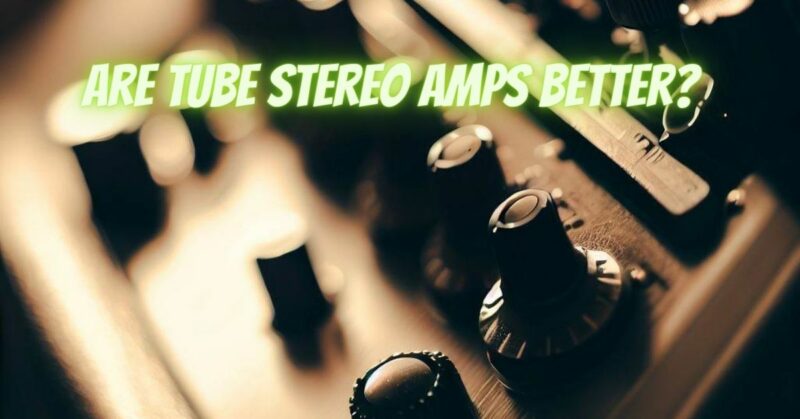When it comes to stereo amplifiers, enthusiasts often find themselves pondering the age-old question: Are tube stereo amps better than their solid-state counterparts? Tube stereo amplifiers, also known as valve amplifiers, have amassed a dedicated following of audiophiles who believe they offer a superior sound experience. In this article, we delve into the unique qualities of tube stereo amps and explore the factors that contribute to their reputation for excellence.
- Warm and Natural Sound Reproduction:
One of the main reasons tube stereo amps are highly regarded is their ability to deliver a warm and natural sound reproduction. Tube amplifiers have a characteristic sonic signature that many listeners find pleasing. They produce harmonically rich tones and a smooth distortion, providing a sense of musicality and depth. This quality is particularly noticeable in the midrange, where vocals and instruments often shine with a lifelike and engaging presence.
- Harmonic Distortion and Musicality:
Tube stereo amps introduce a particular type of harmonic distortion that adds to the overall musicality of the sound. While solid-state amplifiers strive for accuracy and linearity, tube amps embrace a more harmonically complex and nuanced approach. This distortion can enhance the harmonics of the audio signal, resulting in a more immersive and emotionally captivating listening experience.
- Dynamic Range and Expressiveness:
Tube stereo amps are renowned for their ability to handle dynamic range and reproduce music with finesse and expressiveness. They excel at capturing subtle variations in volume, allowing for the delicate rendering of low-level details. This dynamic responsiveness adds a sense of realism and involvement, enhancing the emotional impact of the music.
- Imaging and Soundstage:
Tube stereo amps often exhibit exceptional imaging and soundstage capabilities. They can create a spacious and three-dimensional sonic presentation, making the music feel more open and immersive. With the right speaker pairing, tube amps can produce a wide and accurate soundstage, allowing for precise instrument and vocal placement within the listening environment.
- Pleasing Harmonic Distortion and Even-Order Harmonics:
Tube stereo amps have a propensity for generating even-order harmonics, which are considered more pleasing to the human ear. These harmonics contribute to a smoother and more natural distortion, enhancing the overall sonic experience. This characteristic is often attributed to the way tubes produce harmonics compared to solid-state amplifiers, which can lean towards odd-order harmonics that can sound harsh or harsher.
- Aesthetic Appeal and Vintage Charm:
Tube stereo amps possess a certain aesthetic appeal that resonates with audiophiles and music enthusiasts. The visual allure of glowing tubes and classic design elements evokes a sense of nostalgia and a connection to the rich history of audio reproduction. This vintage charm adds an intangible allure and contributes to the overall desirability of tube stereo amps.
While the preference for tube stereo amps is subjective and dependent on individual taste, many audiophiles believe that tube amplification offers a unique and engaging sound experience. The warm and natural sound reproduction, harmonic distortion characteristics, dynamic range, imaging capabilities, and vintage charm contribute to the allure of tube stereo amps. It’s important to note that solid-state amplifiers also have their own merits, including accuracy, power efficiency, and reliability. Ultimately, the choice between tube and solid-state stereo amps comes down to personal preference, the desired sonic characteristics, and the ability to find the perfect match with your speakers and listening environment.


